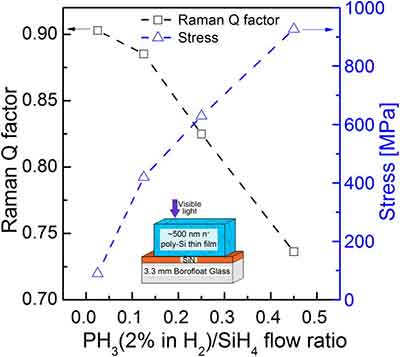How to Model Calibration of Poly Si Thin Film Growth?
Poly Si Thin Film Growth
We have the expertise to help you with your research. Send us your specs and quantity today!
Get Your Quote FAST!
Model Calibration of Poly Si Thin Film Growth
The first step in modeling the thickness and rate of poly-crystalline organic semiconductors is to create a reliable computational model for the hole mobility. This method uses the site energy differences and transfer integrals from quantum chemical calculations. This technique involves periodic boundary conditions to capture the interactions with surrounding molecules. The calculated mobility is then corrected with a calibration equation based on microscopy images. In addition to improving accuracy, the calibration equation also minimizes the substrate.
Another important property is thickness uniformity. Even thickness distribution can reduce the performance  and durability of the thin film. If the substrate has a complex topography, the thickness must be uniform. The uniformity also has an effect on the yield and the cost of ownership. The better the thickness is, the more usable the part will be. The higher the uniformity, the less you will need to invest in process development.
and durability of the thin film. If the substrate has a complex topography, the thickness must be uniform. The uniformity also has an effect on the yield and the cost of ownership. The better the thickness is, the more usable the part will be. The higher the uniformity, the less you will need to invest in process development.
The process begins with the cleaning of the substrate and deionized water rinse. After this, the substrate is admitted to the growth room. The temperature is lowered with an arsenic line to protect the substrate. After the first layer of the material is grown, the second layer is formed by a process called molecular beam epitaxial growth. The indium electron gun stove shutter closes, forming the second layer of the poly-Si thin film.
The process begins with the cleaning of the substrate. Using deionized water to rinse and dry the substrate, the device then charges the gas. The indium electron gun stove shutter lowers the temperature, protecting the substrate. The InGaAs and GaAs epitaxial layers are then grown. A second step, the indium beam deposition of the poly-Si thin film, then the indium electron gun stove shutter, is repeated.
The model is used to measure the hole mobility in poly-Si thin films. The numerical method has several advantages. It allows the user to accurately predict the thickness of the film and its properties. It is a fast method to model the growth rate of the films on various semiconductor devices. If the device is designed to be thin, the entire process is automated. The indium electron gun stove shutter enables the subsequent growth of the epitaxial layers of the film.
After the sample substrate has been cleaned, the process is performed. Once the growth has finished, the indium electron gun stove shutter closes the GaAs substrate and InGaAs epitaxial layer. The resulting GaAs layer is now the epitaxial layer. The entire process is repeated until the desired thickness is achieved. The next step is to calibrate the indium electron gun and compare the results.
Before the ion beam epitaxial device, the substrate is cleaned with deionized water. After the deionized water rinse, the substrate is admitted into the growth room. The arsenic line protects the substrate and lowers the temperature to 500 DEG C. The indium electron gun stove shutter enables the growth of the GaAs epitaxial layer.
After the indium electron gun stove shutter, the indium electron beam emitter, GaAs, and InGaAs substrate are deposited. The GaAs-based epitaxial system provides feedback on the deposition process and the growth of the thin film. It also allows the operator to modify the deposition parameters during the process to ensure that the film is deposited according to the desired specifications.
The software is an important aspect of the thin film deposition system. An accurate and reliable software allows a user to perform the process steps efficiently. It should be able to handle specific throughput requirements and deliver precision and performance. The recipe builder, automated scheduler, and on-tool charting capabilities are essential features for demanding applications. The software should also support the calibration processes. It should be easy to use and provide clear data.
